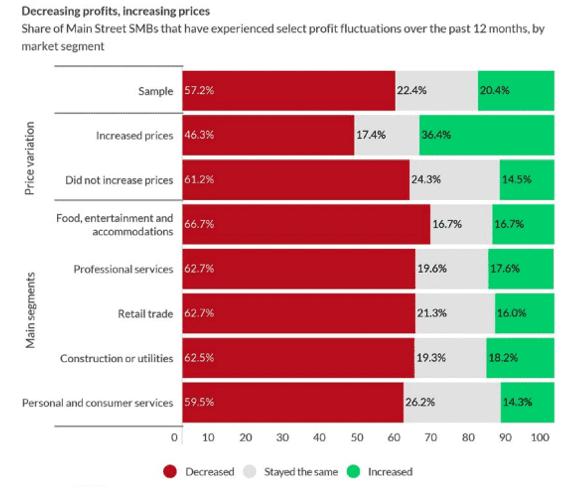Earnings Season Takes Main Street SMBs’ Pulse as Inflation Surges

To get a sense of the state of Main Street small- to medium-sized businesses (SMBs) — how healthy they are, the challenges they face — look no further than earnings season.
As is the case every three months, the commentary from publicly traded firms will shed light on consumers, lending and whether inventories are continuing to pile up on shelves.
The banks are up first, beginning this week, with the likes of J.P. Morgan, Wells Fargo and others. We’ll get a sense of consumer and commercial debt levels.
Inflation will be on everyone’s minds and everyone’s lips. And the question that must be asked is: Just how will Main Street SMBs survive?
As noted in the most recent PYMNTS study on the SMBs that keep the United States economy humming, and as indicated by the very title of the report — “Main Street Health Q3 2022: SMBs Battle Inflation” — it is the struggle with rising costs that will determine which firms make it and which don’t.
The larger financial institutions (FIs) that report this week, in discussing the state of credit, may offer some crucial “tells” as to whether SMBs are going to be able to tap funding if they need to and whether consumers are keeping up with their own debt obligations. If we see a pullback in either or both channels (for lack of a better term), it could spell trouble for SMBs.
After all, the data showed that seven in 10 Main Street SMBs said supplier costs have increased over the last year, with 57% of them raising prices as a result. And yet the actions are not enough to keep margins intact, as a significant percentage of firms are seeing profits decrease.

Just 54% of Main Street SMBs said they expect revenues to increase in 2022; that’s below the 56% who felt upbeat in January. The read-across is that nearly half of firms expect sales to stay the same or decrease, which in turn means that, amid rising costs, profits will continue to fall. The pressure to make up the shortfall between the cash requirements of operating the business and the cash coming into the proverbial coffers will be significant.
Approximately 12% of businesses generating less than $150,000 in sales annually siad they are concerned about whether they will survive to see 2024.
That’s a worrying stat for the economy at large. If SMB owners are indeed worried about their very viability, then they won’t keep hiring workers. They may triage their own bills a bit to pay the workers they do have, perhaps paying the rent late. The ripple effects would be far-reaching. Inflation hits everyone — and perhaps hits Main Street the hardest.
